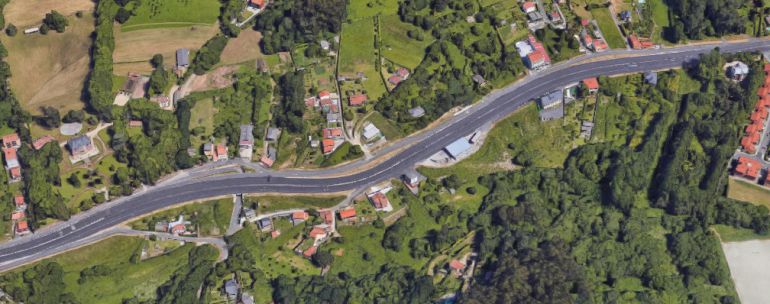MDG’s proposal that all motorways in Oslo should be phased out in the long run is being hit extremely hard.
City Development Agency Hanna Marcussen (MDG) stated to Aftenposten a few weeks ago that “In the long run, all the motorways in Oslo will disappear”. That sounds pretty dramatic.
– The statement came in a side note in the interview «My Oslo», Marcussen says to Nettavisen Økonomi.
– But what do you put in the term “highways”?
– By definition, it is strictly speaking only the E6 through Groruddalen which is classified as a motorway. But what we at MDG are thinking of are high-traffic European and national roads such as Ring 3, E6, E18 along Frognerstranda, Trondheimsveien and Østre Aker vei, Marcussen answers.
These are roads that have up to several tens of thousands of car passes through the day. They are miles away from being city-adapted streets in subjects.
Divides the valley
– It is a big challenge in Groruddalen that the motorway divides the valley into three. It is perceived as difficult for pedestrians and others to cross, Marcussen parries.
She says that the plans to phase out the motorways in the long term are something that both Oslo Municipality and the City Council have as their ambition in the urban development strategy.
– We want more of the large road facilities to be adapted and converted into attractive city streets when they pass through densely packed urban areas.
Read also: MDG promised price cuts, but the opposite has happened
Beyond reality
The proposals from Marcussen and MDG make the CEO of the Norwegian Truck Owners’ Association and former secretary general of the Progress Party, Geir A. Mo, stumble.
– It is almost impossible to take this seriously, until it is beyond reality. If this is an expression of the image MDG has of the world, I am glad that they seem to make a bad choice, Mo rallies to Nettavisen.
He says that if MDG had wanted to move the roads underground and built new motorways there, it could have had something to do with it.
Utopia
– But they are not the ones they want! They want to turn the country’s capital into even more queues, traffic jams and chaos by restricting the entrances and exits, as well as through traffic. It is pure utopia! thunder Mo.
Mo believes the MDGs seem to forget that transport is a vital necessity and their dreams that we should all cycle and walk are and remain dreams.
– One thing is that one can distribute differently inside a city, but if they now go on the thoroughfares and in and out as well, this will just be chaos. The last thing we need in Groruddalen and on the E-18 into Oslo are several outdoor offices and outdoor cafes.
Read also: FNB: – Move the E6 out of Oslo and get rid of the heavy transport
Shared responsibility
Oslo Municipality does not have control over national roads and European roads, only over county roads and local roads.
– No, so this is not something MDG or the city council can do alone. We must link the policy to the Norwegian Public Roads Administration, and we have already aired the idea with the Norwegian Public Roads Administration, Marcussen says.
She admits that they have a long way to go to get the state involved in such a way of thinking. But the city council refers to developments in other countries to illustrate how they want it in Oslo.
– In Paris, the speed limit in central areas has been reduced to 30 kilometers per hour. It is about both air quality and traffic safety.
Must adapt
– But there is a lot of through traffic in Oslo?
– Yes, there is also through traffic, and here we have to make assessments to adapt the traffic that passes through Oslo. And that is precisely the idea, that it is the traffic that must adapt to the city.
Marcussen says that part of the discussion is related to the traffic along the E6 inland to the city up to the local traffic in the Oslo area.
– Even though there is some through traffic, a good part of the traffic today is from the surrounding areas, which we are working to reduce. We own the local roads, but this is not a “quick fix”, and we must cooperate with the state authorities.
Marcussen and MDG want a maximum speed of 60 kilometers on the major roads, 30 kilometers on municipal roads.
The speed limit on Ring 3 today is up to 70 km / h, but there is an environmental speed limit of 60 km / h. There are also environmental traffic limits on Østre Aker vei and from Hjortneskaia to Lysaker. On the E6 through Groruddalen you can drive at 80 km / h.
Beyond
The focus will be on public transport, more bicycle lanes, sidewalks, living areas and increased planting in the surrounding areas.
– If we put on the 2021 glasses and look at the urban development in Oslo far back, it is completely beyond that a large road has been built along Frognerstranda. And Groruddalen is thus divided through three major roads.
– Large arteries take up areas. Car traffic causes noise and provides poorer air quality for the residents, says Marcussen, and highlights Manglerud as one of the worst areas.
The Urban Development Agency has no doubt that urban development is moving towards more urban streets that are adapted to residential areas and public transport, with more cycle paths and walkways.
Forget tunnels
– But can not many of the noise and air problems be solved by building more tunnels?
– Many people want tunnels, like in Filipstad, but it will be very expensive. The regulations also say that we can not make long lids and tunnels, so I will give clear signals about this. Lids and tunnels are not future-oriented, we have to think new.
– You do not think there will be more queues and chaos with restrictions in the main roads?
– Oslo Municipality and the City Council aim to reduce traffic in Oslo by a third by 2030. We want more of the traffic to public transport, it is connected.
– Another problem related to private traffic is to get a different land use than parking.
Emergency
– What about the accessibility for commercial transport and emergency vehicles?
– Fire trucks must arrive. In such a process, we have to look at accessibility, but not just on these roads. The ambition and vision is to adapt the roads through the city. We need to reduce the part of the traffic that is not commercial traffic and to try to get it onto public transport, cycle paths and walking.
Oslo Municipality has previously tried to close city streets to reduce traffic, with varying degrees of success. In 2014, the then transport agency councilor Guri Melby (V) closed Finnmarksgata from Carl Berner’s place to Tøyen for private motoring.
The purpose was to open up the green areas and to make it better for those who live there. But that only led to traffic going on small roads past schools, and the closure had to be lifted.
– I do not know all the details about that closure, but it is very important that the traffic does not just move and create problems for other local areas, Marcussen says.
Far from reality
City councilor Camilla Wilhelmsen in Frp tells Nettavisen that she has heard some of Marcussen’s views before.
– But should I characterize this, it is the most unrealistic thing I have heard. It testifies to a very poor perception of reality of how the infrastructure works. We are talking about access roads to Norway and national roads that transport goods and are transport routes for the whole country.
– She wants to downgrade these roads to city streets. There are already poor capacity motorways in Oslo, and she wants to choke them even more. It is out of the question, says Wilhelmsen.
Read also: Thunder against fossil ban in central Oslo: – Like a mouse piss in the Mediterranean
Recently upgraded
One of the roads to be downgraded is the Østre Aker road between Hasle / Økern and Høybråten, in the far northeast of Oslo. The road has four lanes, is exit-regulated and has a two-level intersection, but is not formally defined as a motorway.
– I have heard before the desire to downgrade Østre Aker vei in connection with the Hovin plan. But the road has been recently upgraded, so I do not understand that it is possible.
Wilhelmsen says it would have had major consequences if the proposal to Marcussen and MDG goes through.
– The traffic had gone much slower, and it would not have been very nice to get this traffic of mine through the local communities to people. There will be no pleasant city streets, says Wilhelmsen, who thinks about the experiences from growing up in Drammen.
Read also: Here the border will go for petrol and diesel cars in Oslo: – Extremism at its worst
Not back
– In Drammen, all the traffic went through the city streets, and we do not want to go back there. Some roads have to have a large capacity. We should rather upgrade the motorways with tunnels through the local communities.
– Marcussen objects that tunnels and lids are very expensive, and we can not make long lids and tunnels?
– Yes, it is expensive, but at the same time a good urban development. Bjørvika has never been developed without tunnels. It is good environmental policy to add tunnels to bring about good urban development, Wilhelmsen answers.
Together with, among others, the Conservatives and the Liberals, the FRP wants a long tunnel through Manglerud in Oslo east.
– It had been an important tunnel for the people there who live with dust and noise. I still get inquiries from residents of Manglerud. But this proposal is hindered by the socialists in Oslo and by the MDGs. We will always need goods to be transported in the best possible way from A to Z, and this is done in an even better way by tunnel.
Grasslands
Wilhelmsen, however, shares Marcussen’s view that the E18 should never have gone along Frognerstranda, but points to a study trip to Madrid that it would have been entirely possible with a lid over.
– Not necessarily to have homes over, but nice grass areas, as in Madrid. It would have been great on Frognerstranda
Wilhelmsen has no faith that the radical grips of the MDGs will be any of it.
– Even the MDGs depend on getting goods and services delivered, and we will not have fewer people in the future. We need to increase capacity, so the idea does not hang on at all, she repeats.
–


